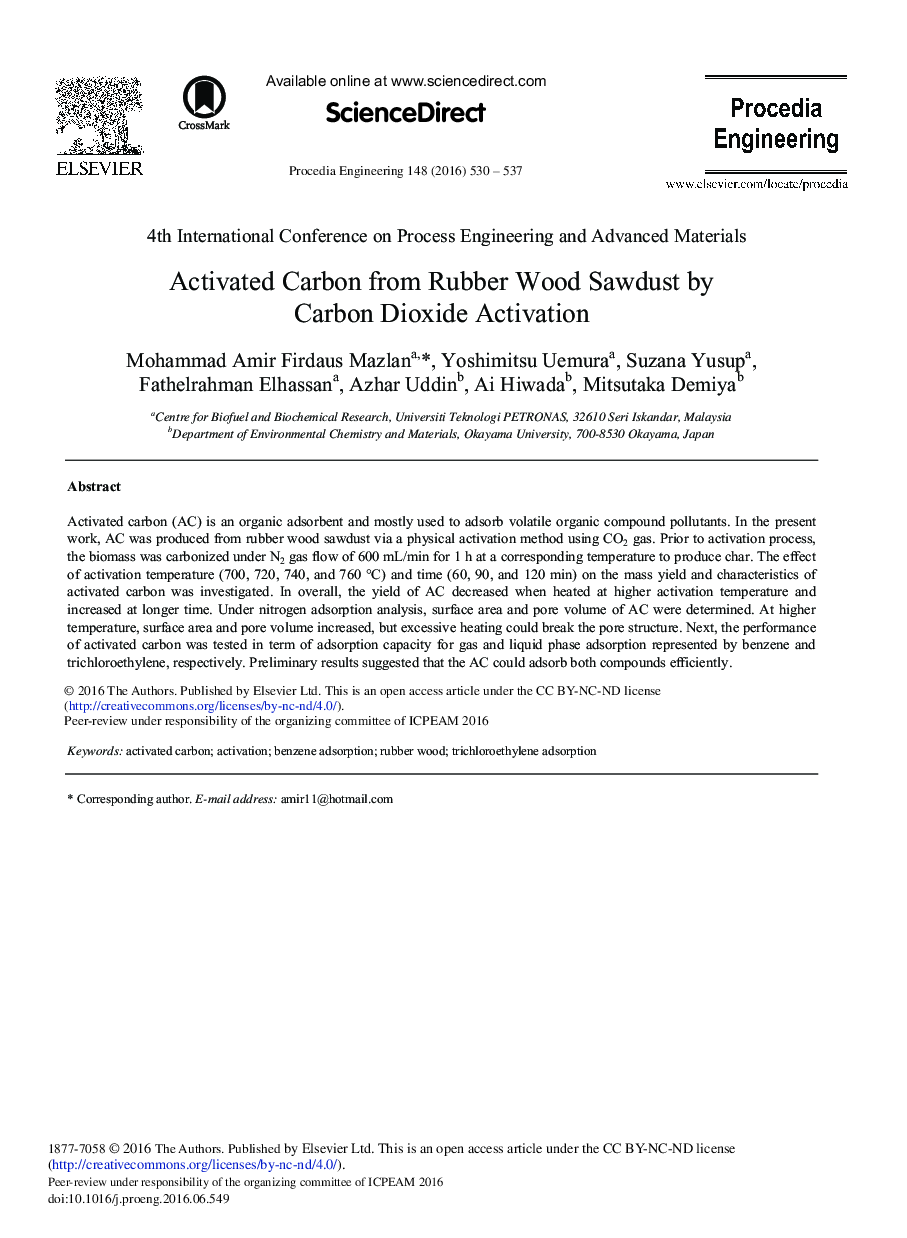| Article ID | Journal | Published Year | Pages | File Type |
|---|---|---|---|---|
| 853324 | Procedia Engineering | 2016 | 8 Pages |
Abstract
Activated carbon (AC) is an organic adsorbent and mostly used to adsorb volatile organic compound pollutants. In the present work, AC was produced from rubber wood sawdust via a physical activation method using CO2 gas. Prior to activation process, the biomass was carbonized under N2 gas flow of 600 mL/min for 1 h at a corresponding temperature to produce char. The effect of activation temperature (700, 720, 740, and 760 °C) and time (60, 90, and 120 min) on the mass yield and characteristics of activated carbon was investigated. In overall, the yield of AC decreased when heated at higher activation temperature and increased at longer time. Under nitrogen adsorption analysis, surface area and pore volume of AC were determined. At higher temperature, surface area and pore volume increased, but excessive heating could break the pore structure. Next, the performance of activated carbon was tested in term of adsorption capacity for gas and liquid phase adsorption represented by benzene and trichloroethylene, respectively. Preliminary results suggested that the AC could adsorb both compounds efficiently.
Related Topics
Physical Sciences and Engineering
Engineering
Engineering (General)
Authors
Mohammad Amir Firdaus Mazlan, Yoshimitsu Uemura, Suzana Yusup, Fathelrahman Elhassan, Azhar Uddin, Ai Hiwada, Mitsutaka Demiya,
